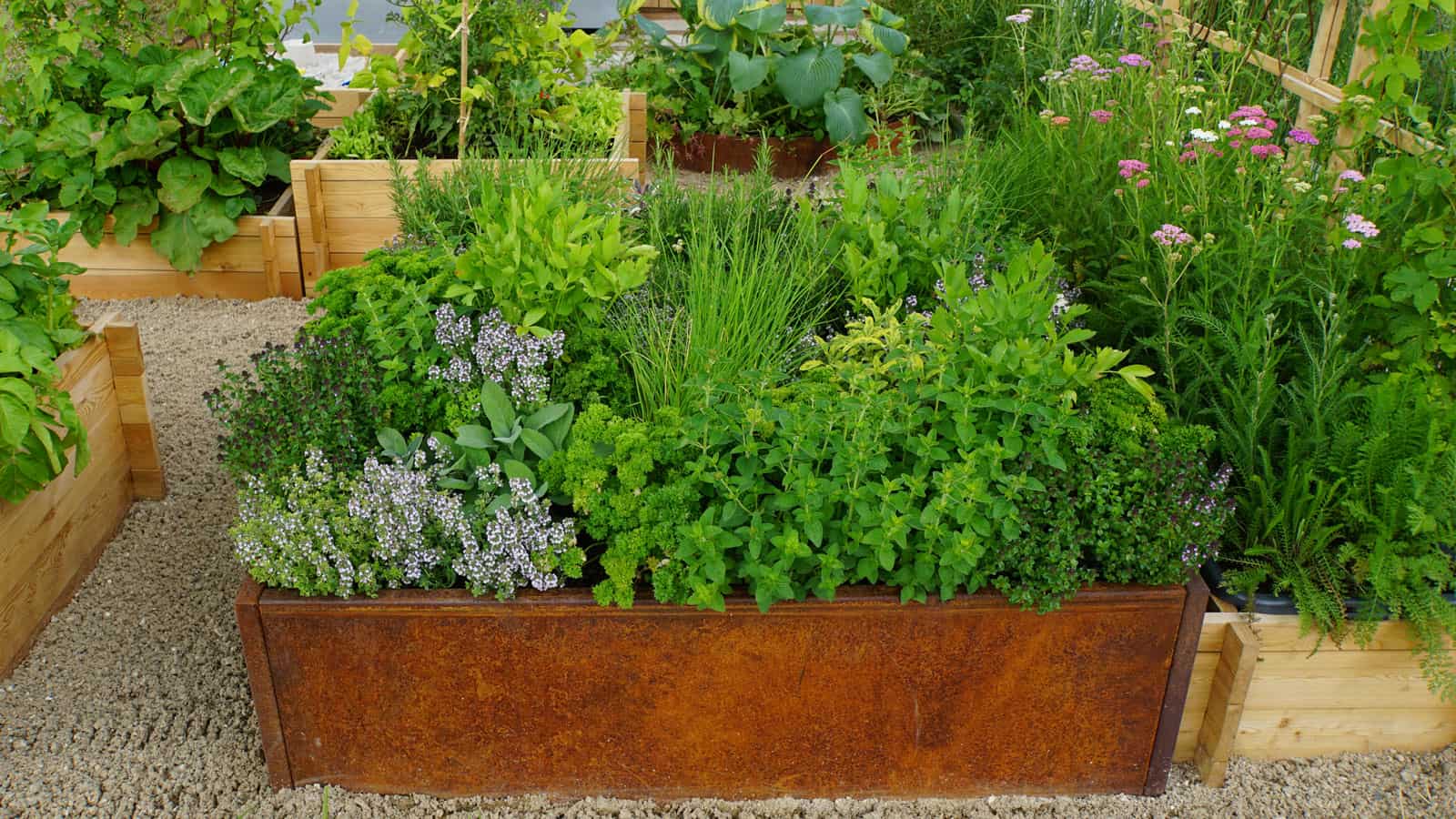Are you nurturing your herb garden a bit too enthusiastically with fertilizer?
You love the flavor punch these greens add to your dishes, but sometimes, in the effort to promote their growth, you might inadvertently add too much fertilizer.
Overfertilizing is an easy mistake, but it can harm your plants and the environment.

In this article, we'll show you how to recognize the signs of overfertilization.
Learn to find the right balance for your herbs, so they contribute to your kitchen without causing unwanted environmental impacts.
Signs of Overfertilized Herbs Plants
Overfertilizing can be as detrimental to your herb garden as underfertilizing. Here are five signs that you might be overfertilizing your herb garden:
1. Yellowing or Browning Leaves
If you notice the leaves of your herbs turning yellow or brown, especially at the tips and edges, it could be a sign of fertilizer burn.
These salts can accumulate in the soil, leading to osmotic stress where the plant struggles to absorb water.
This condition can lead to leaf scorch, where leaf tips and edges turn yellow or brown and may look burnt.
2. Wilting Plants
Despite sufficient watering, overfertilized herbs may appear wilted or droopy. This is because the damaged roots fail to absorb water effectively, leading to a dehydrated appearance.
The roots may become unable to function properly due to the toxic environment created by the excess nutrients.
It's a sign that the soil environment is too harsh for the roots to function effectively.
3. Excessive Leaf Growth with Poor Flavor
Overfertilization, particularly with nitrogen-rich fertilizers, can cause lush, vigorous leaf growth.
However, this often dilutes the concentration of essential oils and other compounds responsible for the herbs' flavor and aroma.
This phenomenon is especially problematic for culinary herbs, where flavor is paramount.
4. Crusted Soil Surface
A layer of fertilizer salts can form on the soil surface, indicating over-application.
This crust can hinder water penetration, disrupt soil structure, and alter the soil pH, making the environment less hospitable for plant roots.
5. Stunted Growth or Death of Young Seedlings
Young plants and seedlings are particularly susceptible to overfertilization.
If you notice that new plants are dying or not growing as expected, it could be a sign that they're being burned or stressed.
Overfertilization can lead to 'fertilizer burn,' where the tender roots of seedlings get damaged, impairing their growth or even causing death.
Aside from overfertilization, here are 6 Common Kitchen Hazards That Harm Herb Plants.
The Impact of Overfertilization
When you overfertilize your herb garden, you may unintentionally harm the delicate balance of your plants’ support systems and the broader environment.
Effects on Plant Microbiome
Overfertilization can disrupt the symbiotic relationships between your plants and their beneficial microorganisms.
A study from the University of Minnesota Extension reveals that excessive phosphorus can harm plant growth, as a reading of 20 ppm is optimal for vegetables, and anything beyond can be detrimental.
Specifically, too much fertilizer can lead to:
- Reduction in beneficial soil bacteria and fungi
- Altered nutrient absorption
- Weakened disease resistance of plants
Watch this video for further explanation on why over fertilization can kill plants.
Environmental Repercussions
The harm extends beyond your garden. Over-fertilizing can inadvertently lead to:
Water pollution
This is when surplus nutrients run off into waterways, causing algal blooms that deplete oxygen and harm aquatic life
Soil degradation
with too many soluble salts from the fertilizer potentially leading to soil structure breakdown
Correcting Overfertilization in Your Herb Garden
If you've noticed signs of overfertilization in your herb garden, such as yellowing leaves or stunted growth, it's essential to act quickly.
Here's how to mitigate the damage and set your garden on the path to recovery.
Immediate Steps to Take
1. Stop Adding Fertilizer
Immediately cease the addition of any new fertilizers to prevent further harm to your plants.
2. Water Your Garden
Flush the soil with water to help leach out excess fertilizer. Apply water gently and evenly to avoid runoff.
3. Remove Damaged Foliage
Trim any visibly damaged or dead leaves and stems to help your plants recover more efficiently.
Long-term Soil Recovery Strategies
1. Test Your Soil
Establish the current nutrient levels in your soil with a soil test for a precise understanding of any imbalances.
2. Incorporate Organic Matter
Boost the health of your soil by adding compost, which introduces beneficial microbes that can aid in nutrient balance.
3. Adjust Your Fertilization Plan
Based on your soil test results, create a balanced fertilization strategy that meets the specific needs of your herbs without over-supply.
Here are 4 Essential Tips to Speed Up the Growth of Your Herbs.
A Reminder to Fertilize Accordingly
Managing your herb garden's fertility is crucial for the health of your plants.
Remember to only fertilize according to the specific needs of your herbs, which often thrive in less fertile soil.
Most importantly, caring for your garden should be enjoyable, so keep an eye on your plants, give them what they need, and they will flourish under your care!

